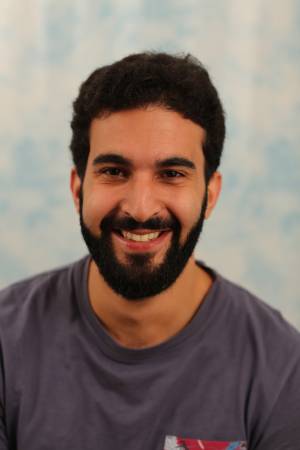Carnegie Mellon University
MSR Thesis Talk: Rohit Jena
Title: Learning Mental Models of Experts in a Simulated Search and Rescue Scenario Abstract: Search and Rescue is a task where the rescuers need to be cognitively agile, strategically consistent, and efficient to save as many trapped victims as possible. In a team scenario, the rescuers must additionally coordinate with each other based on [...]
MSR Thesis Talk: Mohamad Qadri
Title: Robotic Vision for 3D Modeling and Sizing in Agriculture Abstract: Obtaining accurate perceptual information is a critical component in agricultural robotics since there is a heavy need for interaction with the environment to perform tasks such as pruning, harvesting, and phenotyping. In this thesis, we tackle the problem of perception and 3D modeling in [...]
Carnegie Mellon University
MSR Thesis Talk: Alex Baikovitz
Title: Underground Representations for Robot Localization and Mapping Abstract: There has been exciting recent progress in using radar as a sensor for robot navigation given its increased robustness to varying environmental conditions. However, within these different radar perception systems, ground penetrating radar (GPR) remains under-explored. By measuring structures beneath the ground, GPR can provide stable features that [...]
Carnegie Mellon University
MSR Thesis Talk: Ankur Deka
Title: On combining Reinforcement Learning & Adversarial Training Abstract: Reinforcement Learning (RL) allows us to train an agent to excel at a given sequential decision-making task by optimizing for a reward signal. Adversarial training involves a joint optimization scheme where an agent and an adversary compete against each other. In this work, we explore some [...]
MSR Thesis Talk: Zhengyi Luo
Title: Physics-based object-aware ego-centric human pose estimation Abstract: We investigate the roles of body kinematics, dynamics, and objects for 3D human pose estimation using a head-mounted camera. Human kinematics models play a key role in encoding the natural range of human motion, while dynamics models can react to the spatial arrangement between humans and objects [...]
MSR Thesis Talk: Tarasha Khurana
Title: Detecting Invisible People Abstract: Monocular object detection and tracking have improved drastically in recent years, but rely on a key assumption: that objects are visible to the camera. Many offline tracking approaches reason about occluded objects post-hoc, by linking together tracklets after the object re-appears, making use of reidentification (ReID). However, online tracking [...]
Carnegie Mellon University
MSR Thesis Talk: Sujay Bajracharya
work, we address the problem of goal-directed cloth manipulation, a challenging task due to the deformability of cloth. Our insight is that optical flow, a technique normally used for motion estimation in video, can also provide an effective representation for corresponding cloth poses across observation and goal images. We introduce FabricFlowNet (FFN), a cloth manipulation [...]
Carnegie Mellon University
MSR Thesis Talk: Edward Chen
Title: Towards Practical Ultrasound AI Across Real-World Patient Diversity Abstract: In the case of high-tempo, traumatic scenarios on the battlefield, real-time ultrasound (US) imaging serves as an enabler for countless possible robotic interventions. Having the ability to automatically segment anatomical landmarks in the body, such as arteries, veins, ligaments, and veins, for percutaneous procedures remains [...]
Carnegie Mellon University
MSR Thesis Talk: Haochen Wang
Title: Audiovisual ontology and robust representations via cross-modal fusion Abstract: The shrill of an ambulance siren and flashing lights, the hum of an accelerating car — important events often come to us simultaneously through sight and sound. We first consider the problem of identifying these events from raw, unlabeled audiovisual data of agents interacting with [...]
Social Navigation with Pedestrian Groups
Abstract: Autonomous navigation in human crowds (i.e., social navigation) presents several challenges: The robot often needs to rely on its noisy sensors to identify and localize the pedestrians in human crowds; The robot needs plan efficient paths to reach its goals; The robot needs to do so in a safe and socially appropriate manner. In [...]



